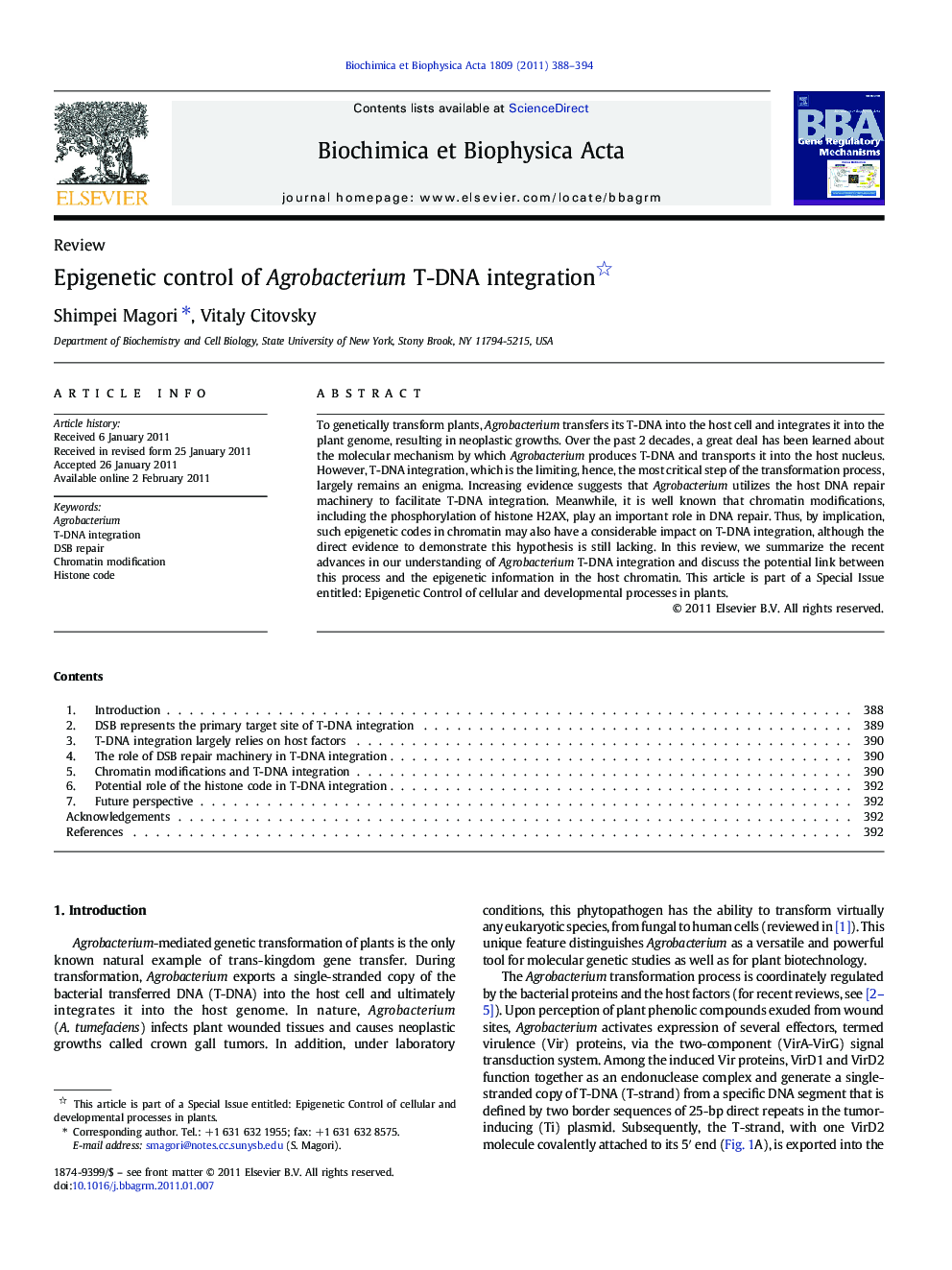| Article ID | Journal | Published Year | Pages | File Type |
|---|---|---|---|---|
| 1946661 | Biochimica et Biophysica Acta (BBA) - Gene Regulatory Mechanisms | 2011 | 7 Pages |
To genetically transform plants, Agrobacterium transfers its T-DNA into the host cell and integrates it into the plant genome, resulting in neoplastic growths. Over the past 2 decades, a great deal has been learned about the molecular mechanism by which Agrobacterium produces T-DNA and transports it into the host nucleus. However, T-DNA integration, which is the limiting, hence, the most critical step of the transformation process, largely remains an enigma. Increasing evidence suggests that Agrobacterium utilizes the host DNA repair machinery to facilitate T-DNA integration. Meanwhile, it is well known that chromatin modifications, including the phosphorylation of histone H2AX, play an important role in DNA repair. Thus, by implication, such epigenetic codes in chromatin may also have a considerable impact on T-DNA integration, although the direct evidence to demonstrate this hypothesis is still lacking. In this review, we summarize the recent advances in our understanding of Agrobacterium T-DNA integration and discuss the potential link between this process and the epigenetic information in the host chromatin. This article is part of a Special Issue entitled: Epigenetic Control of cellular and developmental processes in plants.
Research highlights► Agrobacterium utilizes the host DNA repair machinery to facilitate T-DNA integration. ► Chromatin modifications play an important role in DNA repair. ► We discuss the potential role of chromatin modifications in T-DNA integration.
